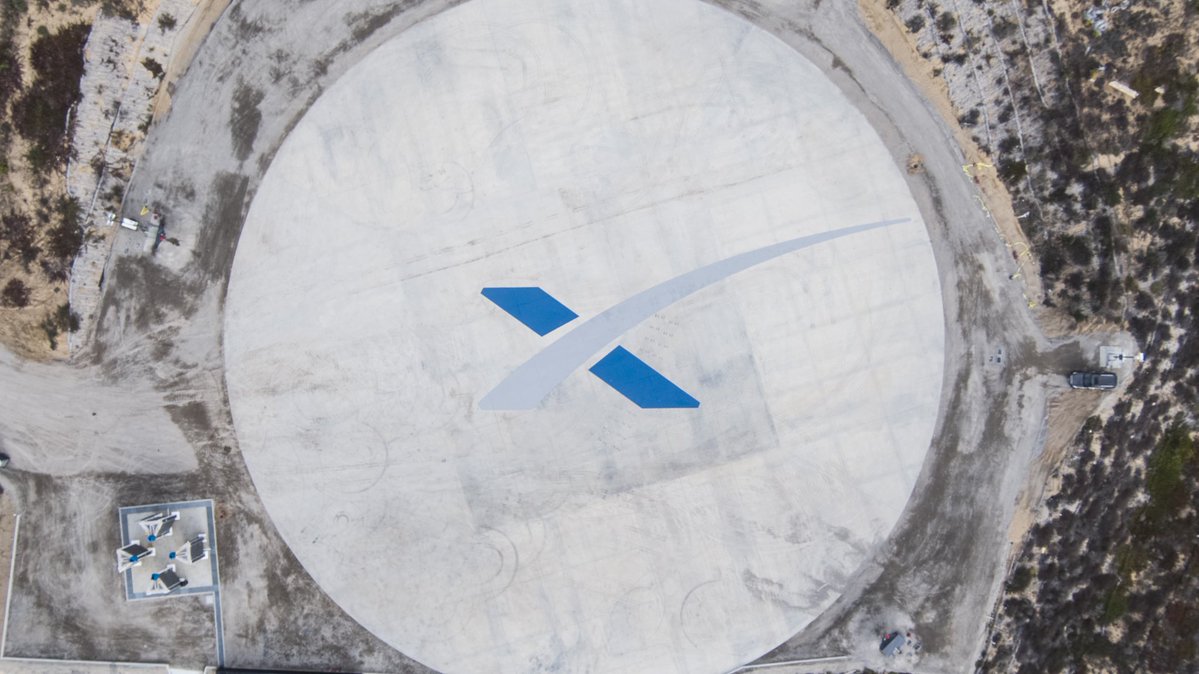Used SpaceX Rocket to Launch Satellite, Try Historic Landing Tonight: Watch Live
Update for 10:39 pm EDT: SpaceX successfully launched the SAOCOM-1A satellite and landed its Falcon 9 booster on a new landing pad at California's Vandenberg Air Force Base, the first-ever West Coast landing for the rocket. Read our full story here.
Preview story: SpaceX will loft an Earth-observation satellite and attempt its first-ever rocket landing on California soil tonight (Oct. 7), and you can watch all the action live.
A two-stage SpaceX Falcon 9 rocket topped by Argentina's SAOCOM-1A satellite is scheduled to launch from California's Vandenberg Air Force Base at 10:21 p.m. EDT (7:21 p.m. local California time; 0221 GMT on Oct. 8). If all goes according to plan, less than 9 minutes after liftoff, the Falcon 9's first stage will come back to Earth safely at SpaceX's "Landing Zone 4" facility at Vandenberg. You can watch the launch live here at Space.com, courtesy of SpaceX, or directly via SpaceX. Coverage will start about 20 minutes before liftoff.
"Sonic boom warning," SpaceX founder and CEO Elon Musk wrote on Twitter Saturday "This won't be subtle." [Inside SpaceX's Epic Fly-Back Reusable Rocket Landings (Infographic)]
SpaceX has landed more than two dozen Falcon 9 first stages, but this would be the first to touch down on the West Coast. The other landings have occurred at Florida's Cape Canaveral Air Force Station, or on robotic "drone ships" stationed in the Atlantic and Pacific oceans.
The first stage flying tonight has one drone-ship landing under its belt: On July 25, it touched down in the Pacific on SpaceX's "Just Read the Instructions" vessel, shortly after launching 10 Iridium communications satellites from Vandenberg.

Get the Space.com Newsletter
Breaking space news, the latest updates on rocket launches, skywatching events and more!
(Such sea landings are required on missions that feature relatively heavy payloads and/or relatively distant destinations in Earth orbit; in such cases, the booster can't carry enough fuel to make it all the way back to land.)
The rocket's return to Earth could make quite an impression on people living near Vandenberg.
"Local residents may see the first stage of the Falcon 9 returning to Vandenberg AFB, including multiple engine burns associated with the landing," U.S. Air Force officials wrote in an advisory Tuesday (Oct. 2). "During the landing attempt, residents from Santa Barbara, Ventura and San Luis Obispo counties may hear one or more sonic booms."
And there could be yet more action in the downward direction tonight: SpaceX's speedy, net-equipped boat, Mr. Steven, will apparently try to catch SAOCOM-1A's falling payload fairing. The payload fairing — the protective nose cone that surrounds a satellite during launch — costs about $6 million to make anew for each launch, Musk has said. So, catching and reusing it (or at least half of it; the fairing falls to Earth under parachute as two separate halves) makes a lot of economic sense.
Such activities are part of SpaceX's effort to develop reusable spaceflight systems, a cost-slashing breakthrough that company founder and CEO Elon Musk has stressed could transform space exploration.
The 3,500-lb. (1,600 kilograms) SAOCOM-1A is headed for a perch 385 miles (620 kilometers) above Earth. The spacecraft, which was developed by Argentina's space agency CONAE, will study our planet in radar light, gathering data that should help researchers track soil-moisture levels and monitor disasters such as wildfires and floods.
SAOCOM-1A's twin, SAOCOM-1B, will also reach orbit aboard a Falcon 9; its flight is targeted for next year.
Editor's note: If you capture an amazing photo of video of SpaceX's Falcon 9 rocket launch and would like to share it with Space.com for a story or gallery, send images and comments in to: spacephotos@space.com.
Mike Wall's book about the search for alien life, "Out There," will be published on Nov. 13. Follow him on Twitter @michaeldwall and Google+. Follow us @Spacedotcom, Facebook or Google+. Originally published on Space.com.
Join our Space Forums to keep talking space on the latest missions, night sky and more! And if you have a news tip, correction or comment, let us know at: community@space.com.

Michael Wall is a Senior Space Writer with Space.com and joined the team in 2010. He primarily covers exoplanets, spaceflight and military space, but has been known to dabble in the space art beat. His book about the search for alien life, "Out There," was published on Nov. 13, 2018. Before becoming a science writer, Michael worked as a herpetologist and wildlife biologist. He has a Ph.D. in evolutionary biology from the University of Sydney, Australia, a bachelor's degree from the University of Arizona, and a graduate certificate in science writing from the University of California, Santa Cruz. To find out what his latest project is, you can follow Michael on Twitter.









